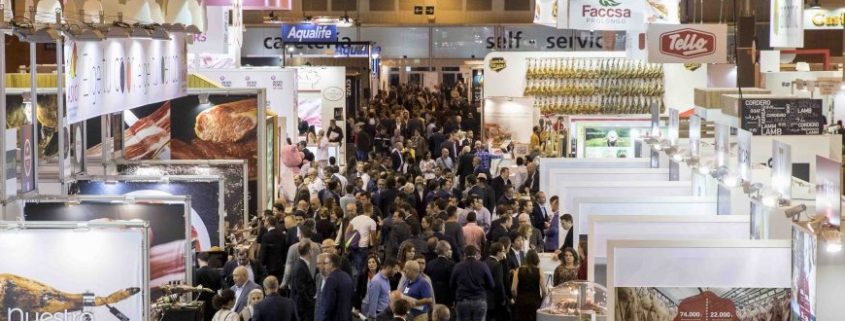The fourth Spanish industrial sector meets in MEAT ATTRACTION 2018
The meat industry is the fourth industrial sector of our country, only behind the automotive industry, the oil and fuel industry and the production and distribution of electricity. The sector, formed by slaughterhouses, quartering rooms and elaborated industries, has an industrial fabric constituted by near 3,000 companies, distributed by all the Spanish geography, especially in rural areas. Although a significant part of the sector are small and medium-sized companies, this has not prevented the gradual development and consolidation of large business groups, some of them leaders at European level.
The joint production of all these companies makes the meat industry occupy by far the first place in the entire Spanish food and beverage industry, representing a turnover of 24,000 million euros, 22.3% of the entire Spanish food sector , in 2017, according to data from the National Association of Meat Industries of Spain, ANICE. This powerful sector will be represented in the only Fair of the Iberian Peninsula dedicated in a monographic way to this industry: the Fair of the Meat Sector, MEAT ATTRACTION. The Hall, co-organized by IFEMA and ANICE, will hold its second edition, from September 18 to 20, at the Feria de Madrid.
A turnover that accounted for approximately 2.2% of the total Spanish GDP (at market prices), 13.6% of the GDP of the industrial branch and 4.1% of the total turnover of the entire Spanish industry. The direct sector employment of our companies, 85,706 workers, represents 24.3% of the total occupation of the Spanish food industry.
A very relevant fact is that the meat industry last year exported more than 2.3 million tons of meat, offal and processed products of all kinds, exceeding for the first time the 6,000 million euros sold in markets around the world, with a very positive trade balance of 477%, a fact that very few relevant economic sectors can present, and which helps to alleviate the traditional trade deficit of our country.
Spanish meat production
In 2017, and with a slower growth of 1.6% compared to 2016, Spanish pigmeat has registered a new production milestone, reaching 4.25 million tons, which marks one more year a historical level never reached.
For its part, the beef sector settled the recovery trend started from 2014 and its production of meat reached 641,003 tons (0.6% more than the previous year), and sheep / goats fell by 1% with respect to the volume of 2016, reaching 125,487 tons.
Consumption data of meats and derivatives
In 2017, home consumption of meats and processed products fell by 1.4% in volume, but would have increased by 1.1% in value, returning to the recovery in some prices that had been targeted in 2015.
These data are collected in the last consumption panel of the Ministry of Agriculture (TAM December 2017), which shows a more pronounced behavior in the category of meat than the global basket of food and beverages in households, which drops by only -0, 7% in volume but maintains + 0.6% in value.
According to the Ministry’s data, all fresh meats fell in volume (-2.2%) while in value rose pork (+ 2.5%), chicken (+ 0.8%) and rabbit (2.2%) , and beef (-1.6%) and sheep / goat (-2.2%) fell again. On the other hand, frozen meats grew 1.3% in volume and 2.7% in value.
The most positive behavior was for processed meats, which in this period progressed both in volume (1.0%) and in value (+ 1.9%). These data must be placed next to the information published by Nielsen, which shows that meat products grew by 4% in value in 2017, to 14,000 million euros.
According to the consultancy, this growth is due to the fact that the sector has been able to satisfy the values that the consumer demands: health, sustainability, innovation, quality and shopping experience. The first two health and sustainability are the fundamental drivers of growth in the shopping cart of consumers. For Nielsen, 60% of consumers claim to strive to make healthy daily purchases and 46% try to buy products that respect the environment. In addition, 57% of consumers say they are willing to pay more for higher quality products.









